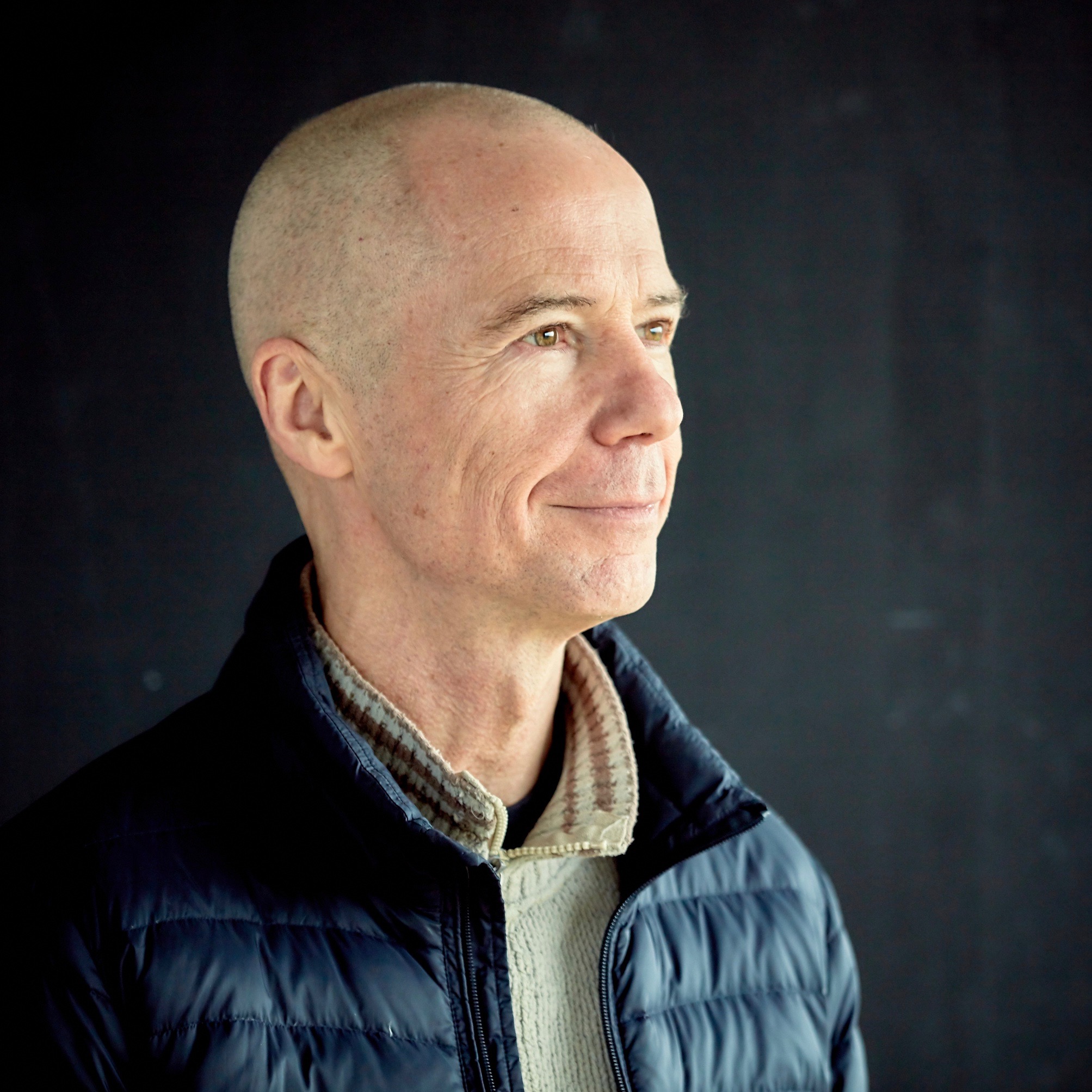


Tony Award-nominated composer, Mel Mercier has written music for international theatre productions directed by Deborah Warner, Phyllida Lloyd, James Macdonald and many more, as well as commissions for Javanese gamelan and contemporary dance productions. He is a traditional Irish percussionist, composer and educator, with an international reputation as an innovative performer. As Professor and Chair of Performing Arts at the Irish World Academy of Music and Dance, University of Limerick, he is committed to creating new work across genres and art forms.
Mel’s creative process, which is rooted in intuition, collaboration and responding to the energy of his fellow musicians and artists, stems from his background as a bodhrán and bones player and his upbringing as the son of The Chieftains’ original bodhrán player, Peadar Mercier.
His soundscapes meld the spoken word together with surprising natural and industrial sounds and a wide swathe of instruments, from the lute to the cello and Persian flute. His theatre compositions paint the shadows into the artistic visions of the directors and artists he works with and as standalone works, they transport the listener and capture the ephemerality of live theatre.
In 2012, Mel embarked on an epic pilgrimage across the UK with Deborah Warner, Fiona Shaw and Artichoke to begin to create the soundscape for Peace Camp. Commissioned as part of the London 2012 Festival, Peace Camp was a UK-wide coastal installation celebrating love, poetry and landscape. Eight murmuring, glowing encampments appeared simultaneously at some of Great Britain and the north of Ireland’s most beautiful and remote coastal locations, from County Antrim to the tip of Cornwall. Between dusk and dawn over the course of a week, these otherworldly encampments were visited by thousands of people.
The soundscape or ‘poetryscape’, which emanated from the glowing tents, was a work of art in itself. An aural landscape of undulating natural sounds intercut with an ever-shifting tapestry of love poetry recorded in the five languages of our islands, the composition represents poetic traditions across the centuries.
Earlier this year at the start of lockdown, we approached composer Mel Mercier to work with us on a new edition of this mesmerising soundscape.
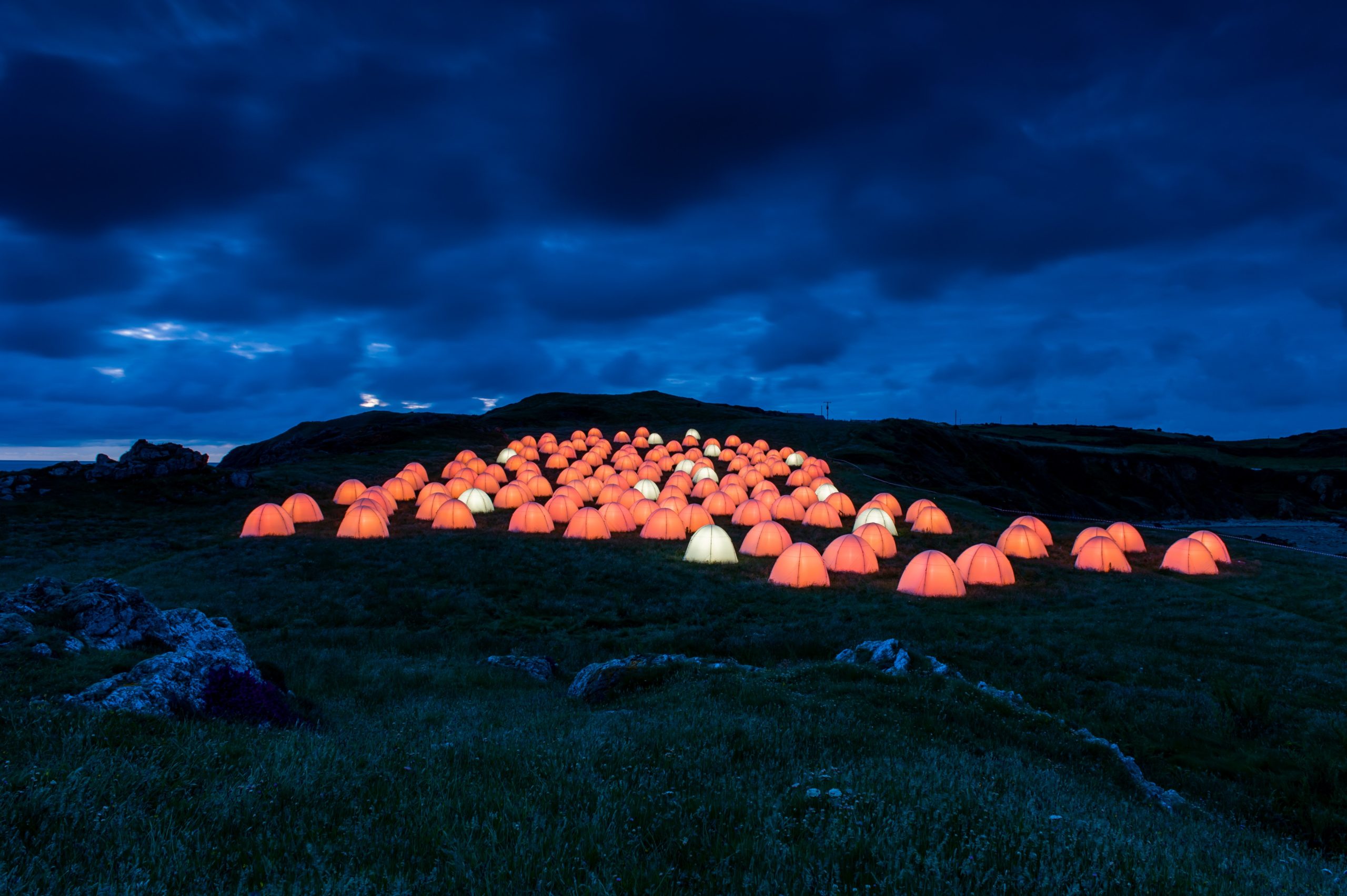
My father was a musician and he played the traditional Irish drum called the bodhrán and another small percussion instrument called the bones. He played with a group called The Chieftains. From about the age of 10, I started to copy him and play myself. I never had any formal lessons from him, because when my father was playing in the 60s and 70s, the bodhrán was not a very well known instrument and nobody taught it. In fact, many people didn’t think it was an instrument at all. I absorbed it from him and I also absorbed a lot of his rhythm and style.
I have nine siblings, many of them musical and otherwise artistic, but it was my older brother Paul and I who followed most closely in my father’s musical footsteps. It was a very exciting time in Irish music in the 1970s – what we call the revival period. Traditional or folk music became incredibly popular and found new audiences in Ireland and abroad as the Chieftains began to tour internationally. I remember the excitement around their concerts at the Albert Hall and Carnegie Hall and their growing fame.
I never went on tour because we were young at that stage, but we did go to their concerts in Dublin and that was very, very exciting. The Chieftains appeared on Top of the Pops and The Old Grey Whistle Test in the 1970s and that really enhanced their street cred amongst our friends, who were all avid fans of Top of the Pops favourites, like Slade, T-Rex and others. We sensed that there was some kind of cultural awakening happening around us. We were too young to understand it but we knew we were caught up in it.
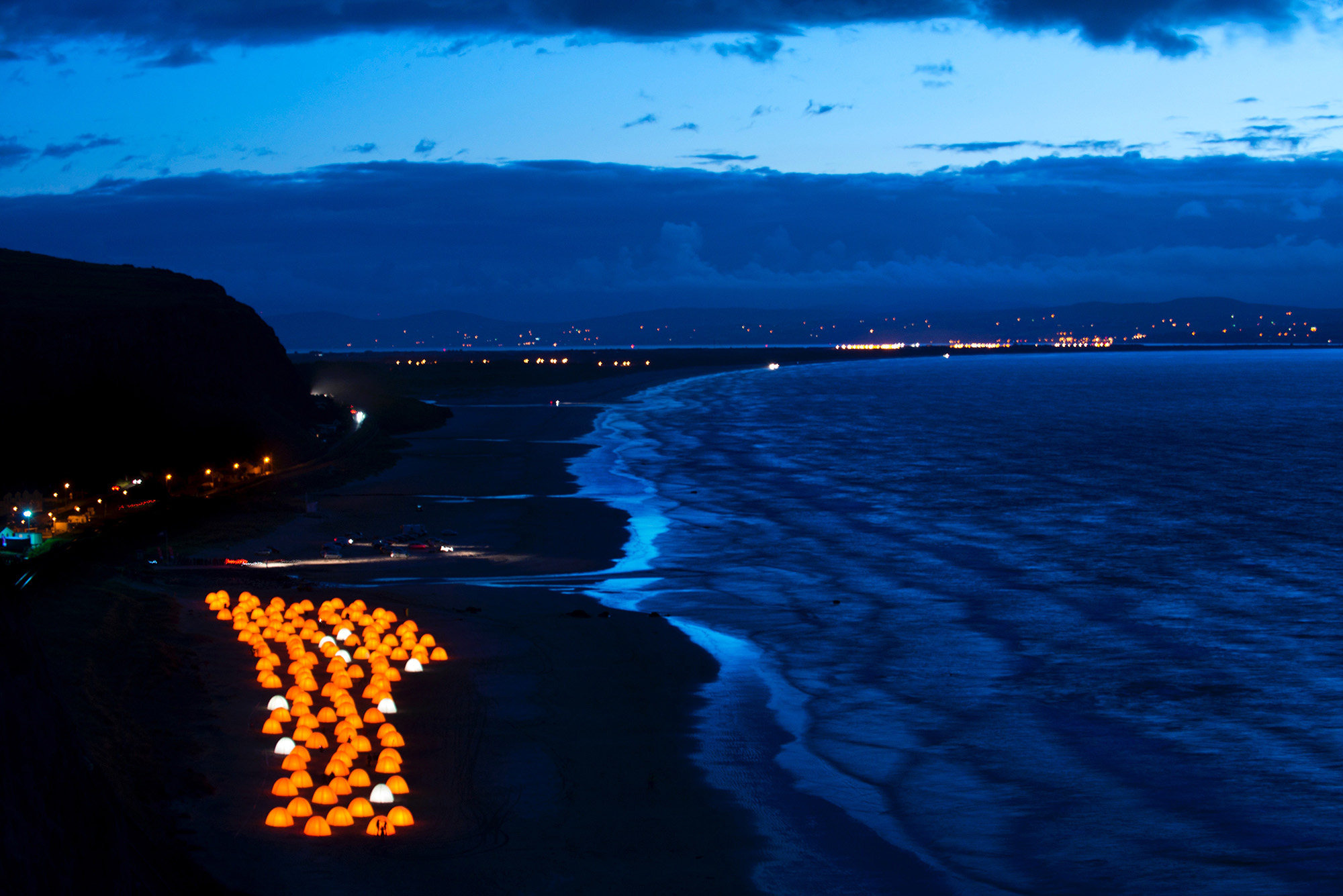
Yes, I went to University College Cork in the late 1980s. I studied for a fairly typical music degree there, except I was able to do the course asa bodhrán and bones player, and to study my own music, Irish traditional music, with Mícheál Ó Súilleabháin as part of the degree. To be able to do a formal music degree in a university as a traditional percussionist was unusual at that time, anywhere in the world.
I then went to California to do a master’s degree at the California Institute of the Arts. That’s where I began my studies in world music. I started to play Indonesian gamelan ensemble music, North and South Indian music, Latin American music and West African drumming. I was really drawn to all of the ensemble traditions and I found that what I really loved was playing with other people. I certainly enjoyed those musical experiences in California. They really broadened my musical horizons.
In an interesting way, it was both similar and incredibly different. The ways that Indian classical music, Indonesian gamelan and West African drumming work, are fundamentally different to the way that traditional Irish music works. They all share some similar functions, but they’re different musical languages. I was partly drawn to their participatory nature, and the fact that they play an intrinsic part in community, with a very strong social dimension.
Yes, to be entrained together with others – everybody connected to the same pulse. It’s what happens when you go dancing in a club and everybody is caught up, everyone’s entrained to the same beat. It can create a very strong sense of togetherness, of oneness, even.
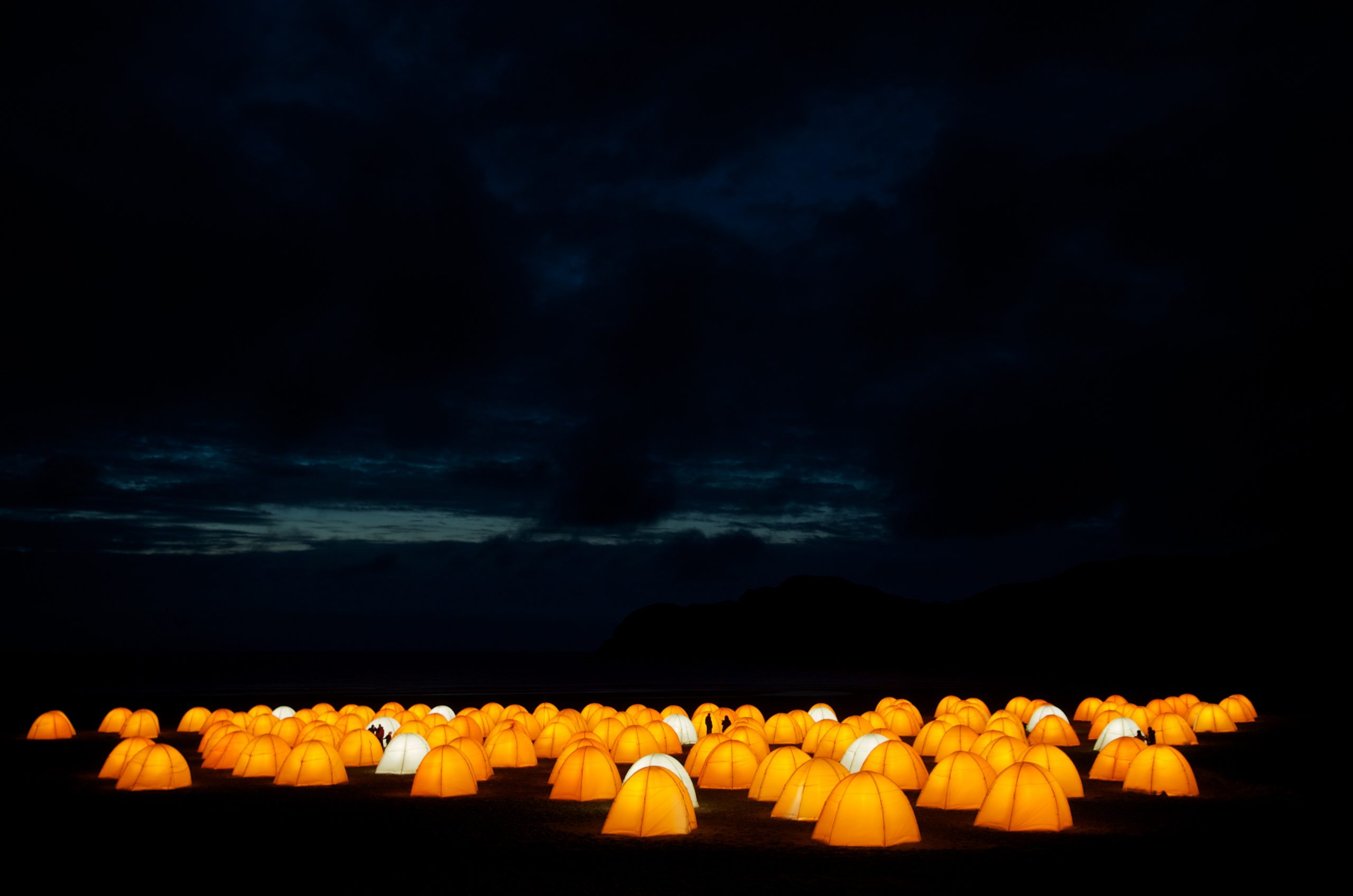
Even before I went to the US in the 80s, I had met somebody who was very, very influential. By that stage I was beginning to play a little bit with my father. He had left The Chieftains and we’d sometimes sit at home playing together. Then, one day we got a phone call from somebody called John Cage.
John Cage was a renowned American avant-garde composer, but we’d never heard of him. The American avant-garde was the furthest thing from our musical lives. John was in Dublin and he was making a piece called Roaratorio, which was based on James Joyce’s Finnegan’s Wake. He wanted to include some traditional Irish musicians in his soundscape, which was made up of thousands of sounds, all drawn in various ways from the text of Finnegan’s Wake. My father said he would do it, as long as he could bring his son, Mel, along with him. John, of course, said yes, and that was the beginning of my discovery of the avant-garde. In a way, it was also my first close encounter with contemporary composition and a contemporary composer.
At that time, the concept of composition or the figure of the composer weren’t very significant in Irish traditional music. It was as if the music just came down to you from your forebears. It was in the air, in the land. It was in the soil and in the mountains and the valley. It was that kind of romantic sense of a common ownership of the music. Musicians knew who they had learnt the tunes from but rarely who wrote them.
Meeting John Cage and entering that avant-garde world, I became more keenly aware of authorship in new, contemporary music. That was wonderful. John’s music seemed to me to be a music of chance and of noise and texture, and of a kind of non-structure. It was the opposite to what we were used to with traditional music, which for me was all about playing together within a very clear dance music structure. We ended up performing Roaratorio live with John and a small group of other traditional musicians and, in time, with the Merce Cunningham Dance Company. We performed it throughout the 1980s in the UK, Europe and in America.
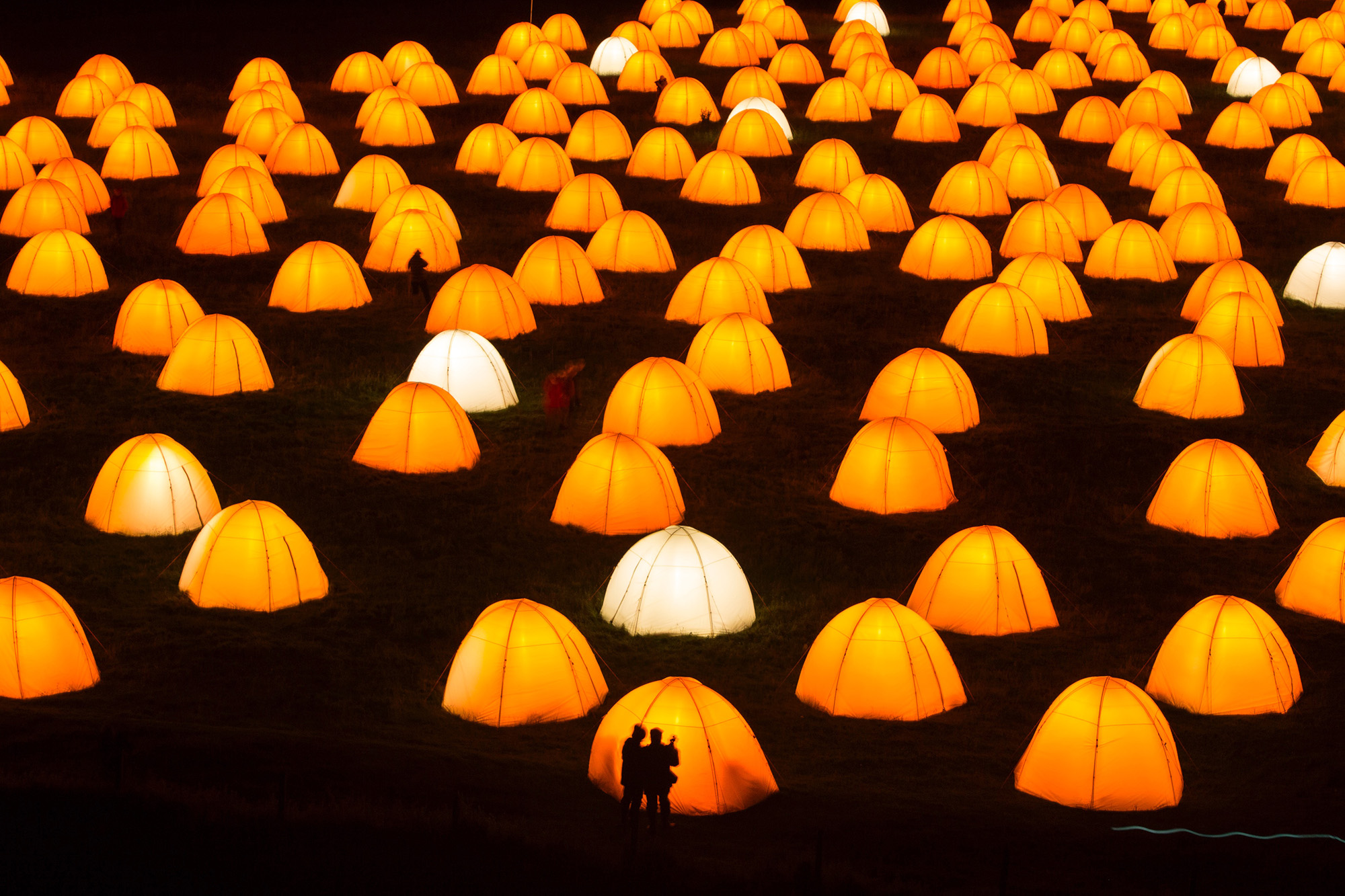
At CalArts I discovered Javanese gamelan music. I began by engaging with traditional gamelan music, and some years later, when I was back in University College Cork, I was inspired by my gamelan teacher at CalArts, the great Indonesian musician and composer, K.R.T Wasitodiningrat, to begin exploring the possibilities of creating new music for gamelan, in a kind of Hiberno-Javanese hybrid. I’ve been making new music for gamelan ever since.
I came home from CalArts with a lot of new knowledge about many different music cultures. In the early years of teaching at University College Cork, I began to bring together some groups of students to try and make some new music. It was very simple, unsophisticated, but it was full of a kind of youthful enthusiasm and a great sense of shared exploration. I never, at that time, thought of myself as a composer. I didn’t engage in music through symbols. I just engaged with it directly through sound. I might write instructions, but never a conventional score. Those were my tentative first steps in composition.
My brother Paul is a playwright. He’s a writer and director. I discovered the magic of theatre by going to see his work in the 80s and 90s, but we never worked together back then. Then in 1999, out of the blue, I got a phone call from Deborah Warner, who had come to Dublin to direct Medea. She said that she was in Cork and asked if I would meet her. I had no idea who Deborah was at that stage, because theatre wasn’t my world. I had heard of Fiona Shaw, who was to play the role of Medea, because I was living in Cork at that stage and you couldn’t be in Cork for too long without knowing about Fiona, because she is one of the city’s most celebrated daughters. Deborah invited me to compose music for the production of Medeaat the Abbey Theatre, and that was the beginning of my artistic relationship with her and Fiona.
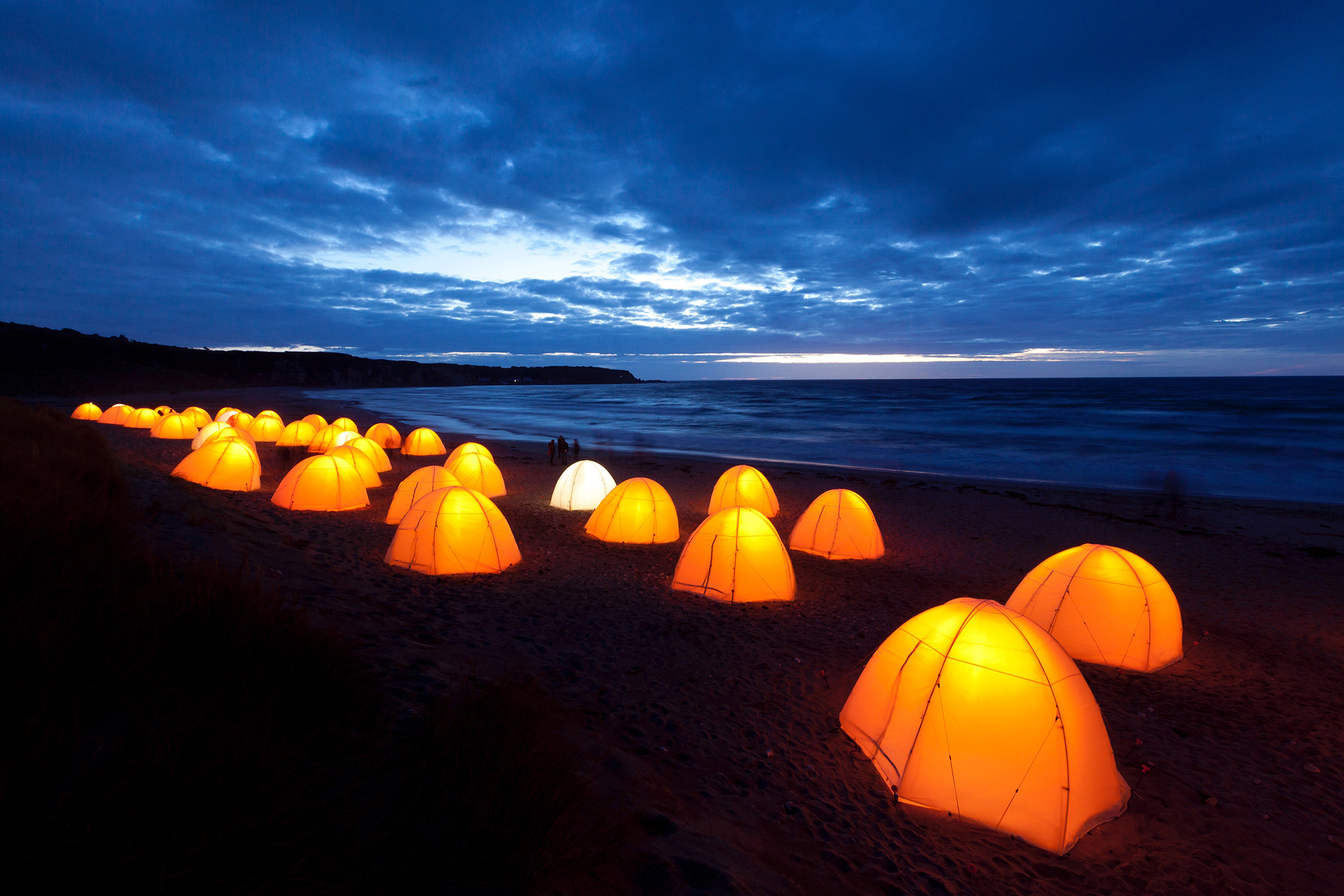
Well, when Peace Camp came around, Deborah asked me if I would do that as well. And so I had the opportunity to collaborate again with her and Fiona.
Yes, it was in the very early stages and I don’t think I could visualise what it would become then. Our initial tests for the project were in the old Tate & Lyle factory and that was very useful, but of course, it was an indoor space and we were creating something for outdoor, coastal locations. It was a big old factory building and it had a very reverberant acoustic. Later, we worked at an outdoor test site for several weeks on the Glamorgan Heritage Coast in South Wales. I remember it was bitterly cold and the weather always seemed to be against us. If it became something dreamlike later, it was, at times, a little bit more like a nightmare at the start. But we stuck at it, and as soon as we got to Glamorgan, on the coast, the tests started to yield something, and the soundscape began to emerge.
Throughout all of this, Deborah and Helen Marriage from Artichoke were making the site visits, taking trains, planes, cars and helicopters, and walking to get to extraordinarily beautiful, often very remote places around the coastlines of England, Scotland, Wales and Ireland.
Deborah herself was on a kind of pilgrimage and spoke about the idea of creating something in those places that would draw people to go on their own journeys of pilgrimage to them.
When we got some of the tents up in Glamorgan on the coast, I still remember the sense of relief at finally arriving in the right place for the work, between the land and the sea, between the earth and sky. But of course, it presented its own challenges in terms of how to serve up sound. There was already a lot of sound from the wind and sea, and the weather was extraordinary that year.
There were more storms than I think any of us had ever experienced in our lives and there was a lot of rain, so more than once the tents were blown away. The wind was constant, but it would lift and then die, lift and die again. Very early on, I realised that there was only one way to respond to this and that was to embrace it. That really helped.
Love poetry was at the heart of the project and the challenge for me was to find a way to deliver and share that in the soundscape. We had begun with some ideas about it being a very intimate experience, where the audience would come and listen into the tents, but actually, when we tried that out we weren’t very taken with it, because it was as if somehow we were eavesdropping. Anyway, once we were outdoors we couldn’t do that because the elements were against us. The sound needed to come out of the tents and be carried on the air to the listeners.
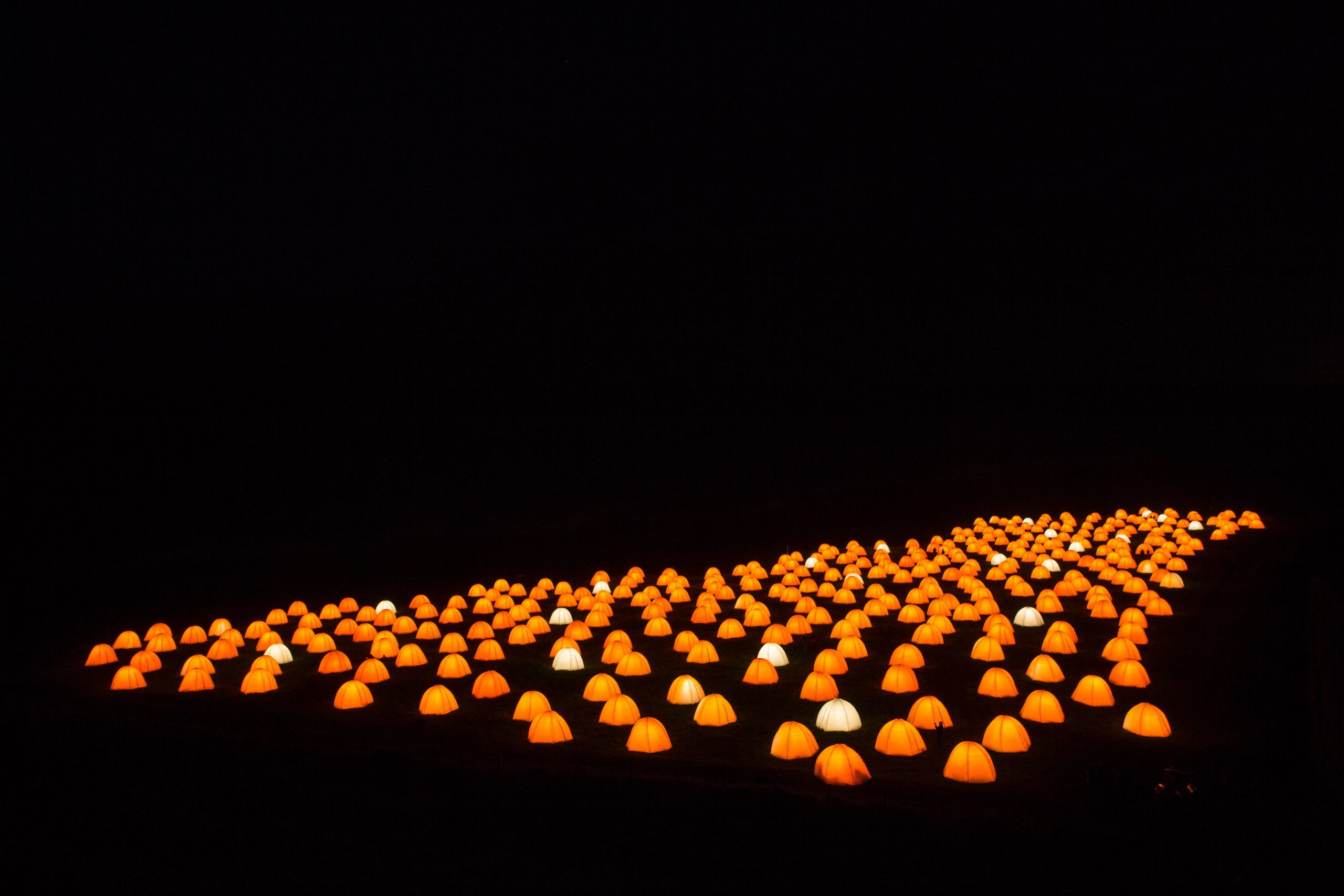
I began to use the sounds of the sea and the sounds of the night. I didn’t use any actual recordings of the sea at all, instead I created a sense of waves by using a recording that I made of a conveyor belt in an old factory in Cork, which I manipulated to make it sound more like waves.
No, not in that case, although I did use some actual sounds from the environment. There was also an idea of tapping into the sounds of night. Deborah suggested the sounds of sleep, of breathing. As the tents were glowing, surrounded by darkness, breath and waves combined with other sounds of the environment such as the sound of a whale or sonar, sounds that give a sense of longing or distance. Before Glamorgan, many of these things would never ever have occurred to me to use in the context of love poetry. But it became clear that the soundscape had to be made of more than love poetry, it also had to be of the coastal sites of the encampments.
So, when we were working at the test site in Glamorgan, I would work composing during the day in a little hut and then go on site at night-time. I would pass over the newly-made composition materials to the sound engineer, Alastair Goolden, who then programmed them into the sound system. I would stand in the middle of the field in the dark and listen, for hours. I used a walkie-talkie to ask Alastair to adjust the sound of the various layers of the soundscape. It was like painting or mixing the sound into the space. We had an ingenious system, designed by sound designer John Del’ Nero that allowed us to feed the sounds in and out of the tents in many different ways.
We had about 550 poems, which Fiona Shaw had recorded around the country, some in studio and some in workshops. I focused on the ones that Deborah and Fiona and I really loved, around 50 of those poems. I enjoyed the voices as much for their musical sound, as for what they were actually saying. At times, I found the tone or the melodic contour of the spoken poetry to be more affective than the words spoken.
I began by editing each individual recorded reading of the poems. It could take me hours to edit one section of poetry, and there might be thousands of tiny little changes and edits to make it flow in a particular way. Invariably, I would slow it down a little and separate out the words a little bit, just because I knew the poems needed to be delivered at a certain kind of pace, otherwise they’d be lost, particularly in an outdoor environment. I also began to play a little bit with the phrasing in the poems. I might separate a phrase and then leave a gap, and then do another phrase. I took some liberties with the performances.
A critical discovery I made was that it made the soundscape more compelling if there was more than one voice speaking. I began to realise that if you have two voices, then you have a duet, the same poem, shared. I also began to weave together two or more voices performing two or more different poems. I chose the combinations of poems and voices only on instinct, not because I studied the poems to see what the shared themes were. I would start with a poem and see if I could make it work in the soundscape and then I’d take another one and see if they liked each other. I found that what began to happen was that these poems, which had probably never before been woven into each other, began to speak to each other. One of the poems in a duet allowed you hear the other poem in new and sometimes surprising ways.
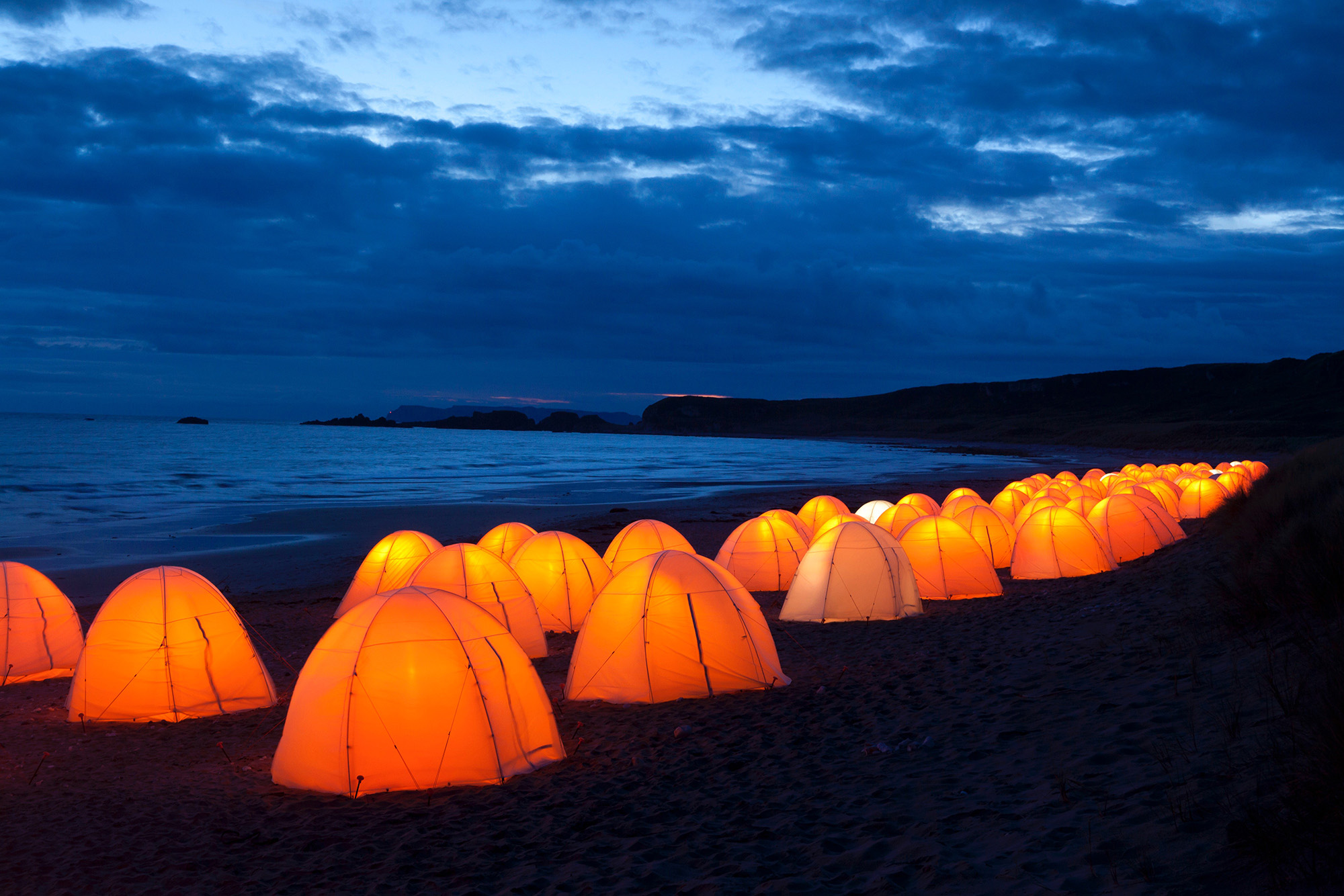
In all of the theatre work I do with Deborah I’m trying to make a sound composition around the voices of actors. In theatre I have no control over the voices. But for Peace Camp I had all the voices as recordings and I could manipulate them, so I did. As well as manipulating the phrasing, I began to play with the words a little. Sometimes, I would break a word and crack it open. I might put a little hesitation in the word. I think it might have happened as an accident the first time, and I liked it because it drew me into the word. It was almost as if the word’s emotional contents were seeping out through the crack.
My primary aim was to hold people in the space of poetry. I think it’s only afterwards that I engaged in analysing the intention. Maybe it’s about tuning in to the emotional and the psychological dimensions of the poems. At the time, it really was just instinct. It required a lot of trial and error and a good deal of trust that something interesting would happen.
Yes, they were the kind of things that I was drawn to when I was making it, and sometimes, as a consequence, I’d be quite surprised then when I did take notice of the meaning. For example, with the poem Ar Lan y Môr performed by Ioan Gruffudd, because I don’t speak Welsh, I actually wasn’t sure whether I was cutting into the middle of words or not when I was editing it. It was one of the first pieces that came together for me and I remember sending it to Deborah and Helen, and when I received very positive feedback, that gave me the confidence to keep working in this way. The other thing that I realised was that having more than one language was really valuable for the composition.
When you have two different languages, they have different colours, different cadences and different rhythms. For example, Ioan Gruffudd has an extraordinary, rich voice. It’s really beautiful, as were all of the voices that Fiona recorded and collected. So you’re working with these incredible elements and the contrast between the languages really works well. There weren’t many different languages used, but the diverse musical and tonal characteristics of those that were included really enriched the soundscape.
The soundscape that is now available on the Artichoke site is a one-hour edit of the original, which was a little bit longer. Listening to it again, eight or nine years on, I felt that some parts were more successful than others. I made some decisions about what I felt I could leave out, to create a new, distilled version.
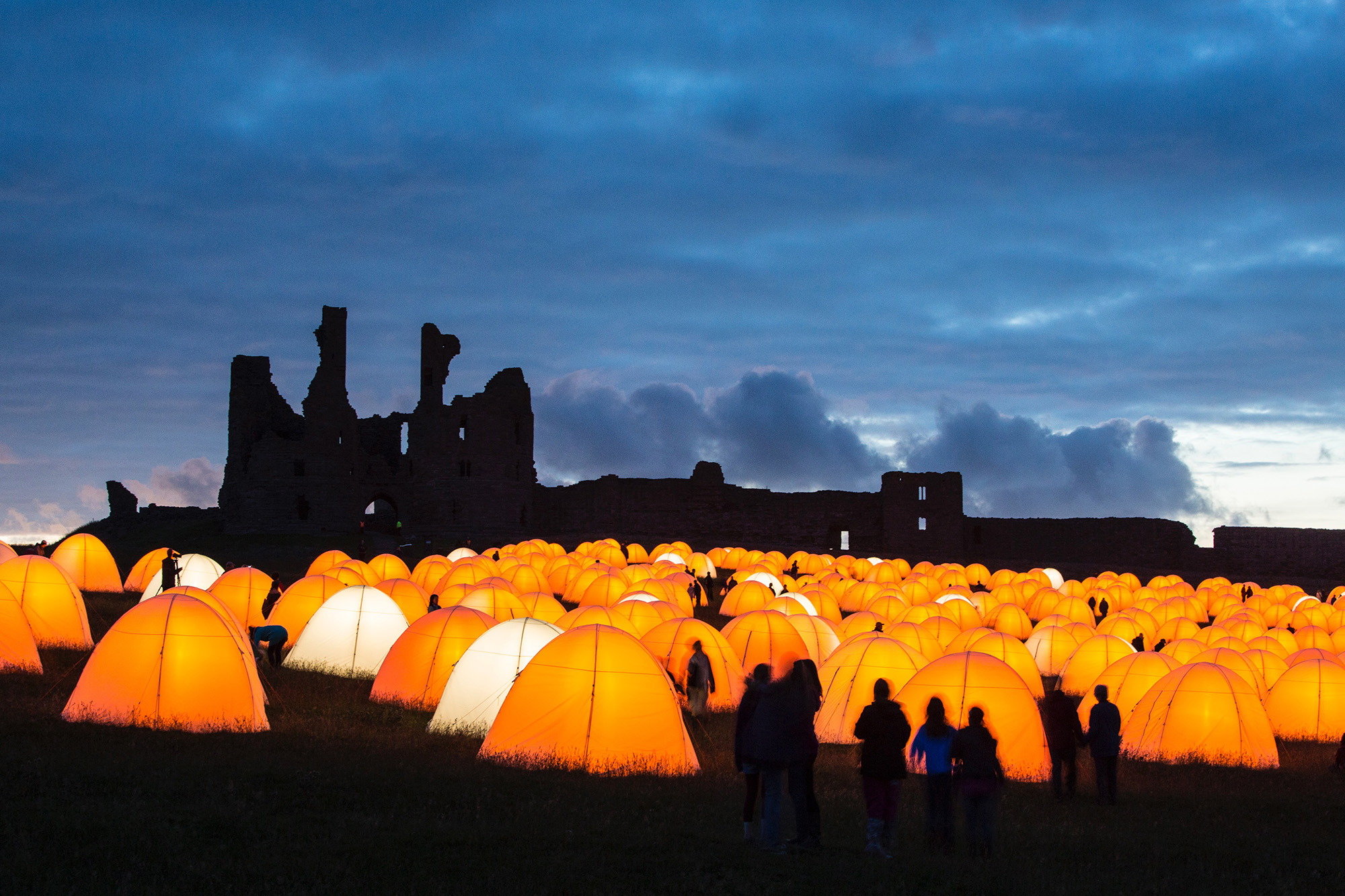
Creating Testament was a bigger challenge. The soundscape for Peace Camp was made already. All of the elements were there and the composition was effectively unaltered in the editing process. When I went into the studio to edit the Peace Camp composition, it was really about fine-tuning the listening experience and curating it for a different space, the headphone space. With Testament it was an entirely different thing, because none of the theatre soundscapes that I’d made over the years included any of the voices of the actors, and they were all made for particular spaces and particular productions. When I work in the theatre, I feel like I am painting with sound. When I go into rehearsals I’ll bring a palette of different sonic colours. I never make a composition beforehand. I have great conversations about the production in advance with Deborah. Stimulated by those, I go away and generate some material to try out at the technical rehearsals. I never read the script beforehand, because I don’t like to have too much detailed information. I’m better when I work through a kind of blurry vision. For Testament, I took the palates of sound I had used in each of nine theatre productions and remixed them to create new, more condensed, standalone compositions with their own independent musical form and structure.
I would say that I had no great desire to make anything in the first few months of lockdown. I know that there may be people who felt it was a great opportunity to make work, but I felt a little bit numb creatively. The juices did begin to flow a little bit later, but I prefer to be amongst people and bouncing off other musicians. I get the greatest pleasure from that.
Exactly, you aren’t in the moment of it anymore and neither are the musicians you are working with. What I’ve learnt over the years is that when you make music with other people and you work with really good people, it’s always going to be better than what you can do by yourself. That kind of shared creative input, when you have good rapport with people, is when you can really make things happen.
At its heart, Peace Camp was very collaborative. Fiona worked at selecting the poems and gathering the recordings of the spoken poetry. Deborah, of course, was doing the grand imagining of the piece, and creating the context for it, so the conversations with them were terribly important. I never felt that I was working on my own. What can be challenging about working during COVID is that it’s more difficult to engage collaboratively with people, to feel the energy of people.
Yes, in an interesting kind of way, when everybody has been through the experience together, or is going through it, you have a shared, enhanced appreciation of the privilege of collaborative working. I expect when we are finally able to meet up that the sessions we will have will be even more intense and more joyful. I hope we will be more grateful. It would be terrible to just go back to the way we were.